The bite force of an animal is largely dependent on jaw muscles, as well as jawbone and surface area of the teeth – but it also depends on the size of their lunch. Because the force in a muscle depends on how much it’s stretched, an animal’s bite force depends on the size of what it’s biting, a study from Brown University finds.
Bite force is measured in pounds per square inch, psi. More accurately, it is pound force per square inch, as it’s the pressure from a one pound force, applied to an area of one square inch (6.5 square centimetres). In other words, the pressure that the animal exerts on its food, or unlucky prey.
Researchers have used computer models based on multiple X-ray images generated by a computerised tomography (CT) scanner of shark skulls, to estimate the bite force of a great white shark (Carcharodon carcharias).
Depending on the size of the shark, the team, led by Prof Steve Wroe, estimated a bite force of nearly 4,000psi, putting the Great White firmly in second position for the strongest bite force. However, as this has not yet been directly measured from a living specimen, we’ve not included it in our round-up of the animals with the strongest bite.
So, who has the most powerful jaws? Of all animals alive on Earth today, the Nile crocodile has the strongest bite, at 5,000psi (or 3,4473,787 newtons per square meter).
Here are the top 10 animals with the world's most fearsome chompers:
10. Hyena (1,100psi)

Distribution: Sub-Saharan Africa
Hyena bite force is used for: Grinding down bones to get at the tasty marrow
Hyenas have conical-shaped premolars, specialised teeth for breaking and crushing bone. Along with their strong jaws and broad molars, these doglike carnivorous mammals ensure no part of the carcass goes to waste. Thanks to highly concentrated hydrochloric acid in their stomach, they can even digest bone.
9. Grizzly bear (1,160psi)

Distribution: Canada and USA
Grizzly bear bite force is used for: Ripping into animal flesh, breaking the bones of large prey
There’s a reason that hikers are told to avoid grizzlies when at all possible. As well as their massive size and razor-sharp claws, they have a bite that’s strong enough to crush a bowling ball… or a human skull, without flinching.
8. Polar bear (1,200psi)
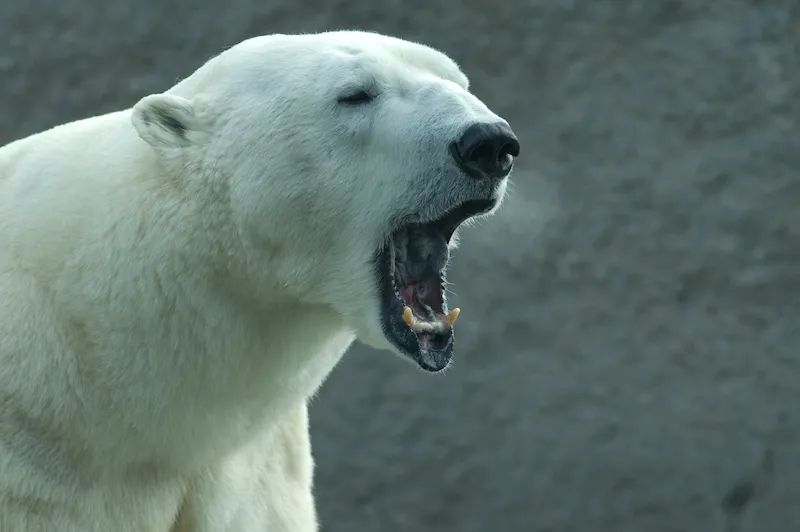
Distribution: Arctic Circle
Polar bear bite force is used for: Chomping through the thick blubber of Arctic animals
Among the bears (Ursidae), polar bears have the strongest bite. They’re also the only bear species to be considered as marine mammals. Their large canine teeth can grow up to 5cm, which they use for their Arctic prey, mainly ringed and bearded seals. But polar bears aren’t picky, they’ll also scavenge carcasses, or munch on other mammals, vegetation, birds and eggs.
7. Gorilla (1,300psi)
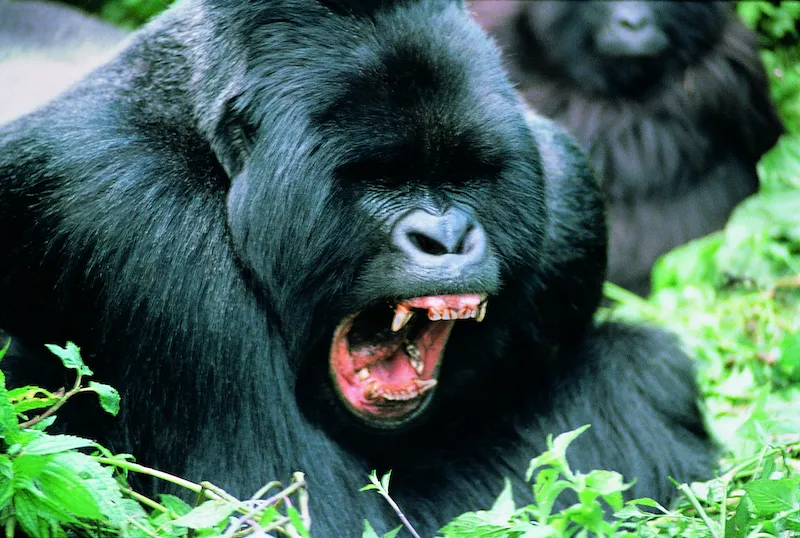
Distribution: Forests of central Africa
Gorilla bite force is used for: Chewing hard branches and tearing bark off trees
Despite their powerful bite, gorillas are largely vegetarian. They use their powerful jaws to strip bark, first from the tree, then for trees like the Milicia, to separate the outer bark (which is discarded) from the sweet inner bark.
6. Bull shark (1,350psi)
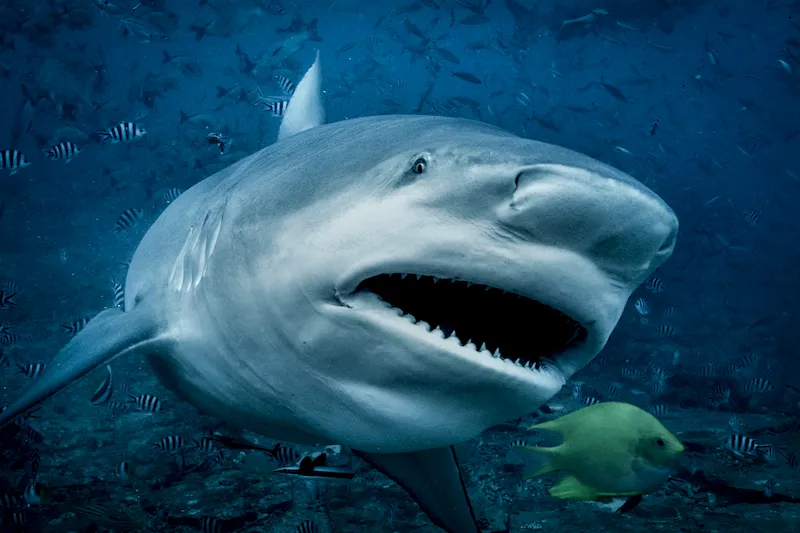
Distribution: Warm coastal areas, rivers and lakes worldwide
Bull shark bite force is used for: A widely varied diet, from oysters and turtles to baby hippos and other sharks
A bull shark has more teeth than other species of shark, up to 350 teeth at any one time. A shark’s mouth works like a conveyor belt: as an old tooth, close to the edge of the jaw, falls out, a tooth from the row behind moves forward to replace it.
This means they can grow up to a whopping 50,000 teeth in a lifetime! No wonder shark teeth are so common in the fossil record.
5. Jaguar (1,500psi)

Distribution: Southwestern USA, Central America, South America
Jaguar bite force is used for: Cutting through the armoured skin of a crocodile, shells of turtles and tortoises, and crushing bone
As opportunistic hunters, jaguars will prey on just about anything. With one powerful bite to the back of the skull, they can take down animals up to four times their own weight.
4. Hippopotamus (1,800psi)
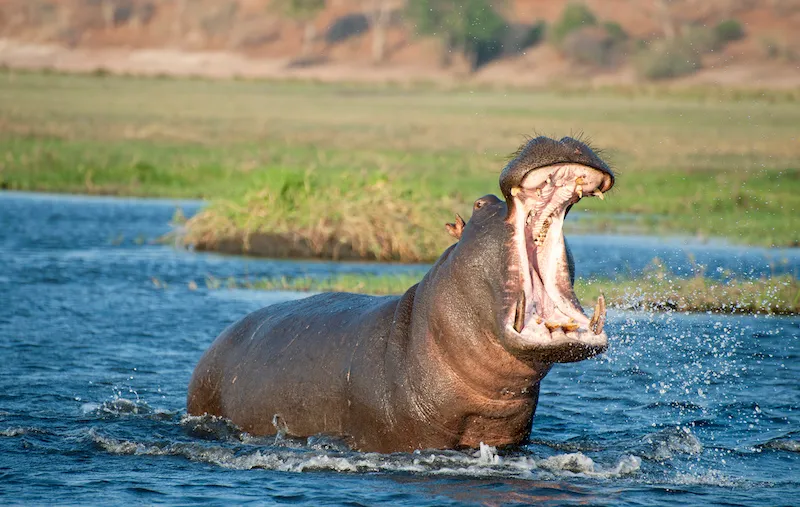
Distribution: Sub-Saharan Africa
Hippo bite force used for: Defence against apex predators, or attacking/defending against other hippos
With the largest mouth and the largest teeth of any land mammal, a hippo’s canine teeth typically measure 71cm, and are continually growing. The largest ever recorded canine tooth for a hippo comes in at a whopping 122cm!
3. American alligator (2,125psi)

Distribution: Southern USA
American alligator bite force used for: Ambushing prey, any prey
As opportunistic predators, alligators will lie in wait for the easiest prey. From snakes, fish and turtles to mammals and amphibians, even insects, they’re not fussy. As for strength? Researchers from Florida State University found that an alligator’s bite could lift a small truck.
2. Saltwater crocodile (3,700psi)
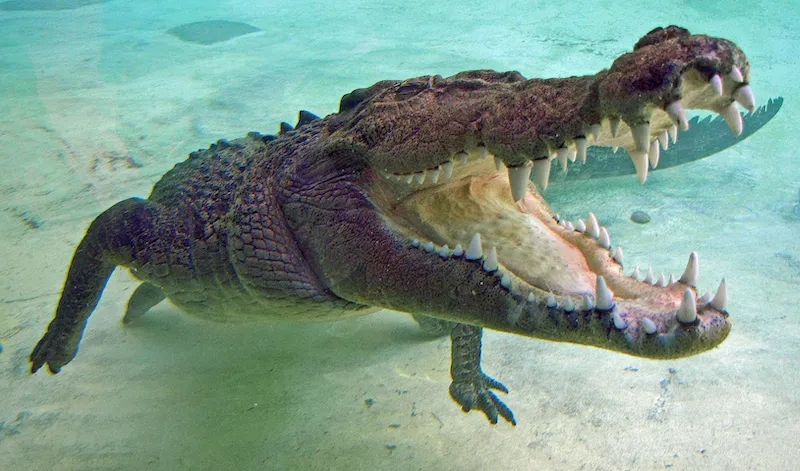
Distribution: India, Southeast Asia, Australia
Saltwater crocodile bite force used for: Gripping onto prey while they use a death roll
The saltwater crocodile, or ‘saltie’ as it’s affectionately known in Australia, is the world’s largest (living) reptile. Males can grow up to 7m in length and weigh in at around 1,000kg, with the females being slightly smaller.
Lurking along the water’s edge, they ambush their prey in a violent lunge. They’re often referred to as ‘living fossils’ and have remained largely unchanged in 100 million years.
1. Nile crocodile (5,000psi)
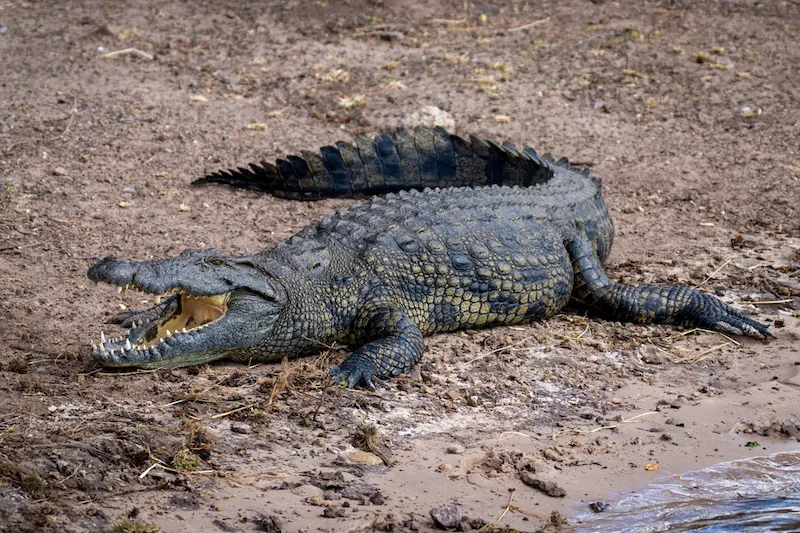
Distribution: Sub-Saharan Africa
Nile crocodile bite force used for: Crushing their prey before swallowing it, often whole
Even though Nile crocodiles are smaller than saltwater crocodiles, they come in at the top of the charts for the most powerful bite.
Aggressive and extremely territorial, they put their powerful bite to good use. Nile crocodiles will take down any prey that dares to venture near the water, although their diet is mainly fish.
What is the bite force of a human?
Although we have a bite force stronger than some of our other primate relatives, the average human bite force is 162psi. That means the Nile crocodile, at the top of our list, has a bite force of over 30 times more powerful than a human!
The world record for the strongest human bite was set by Richard Hoffman, with a bite force more than six times more powerful than the average human. It was measured during a research test using a gnathodynamometer at the College of Dentistry, University of Florida back in 1986.
Discover more animal facts: